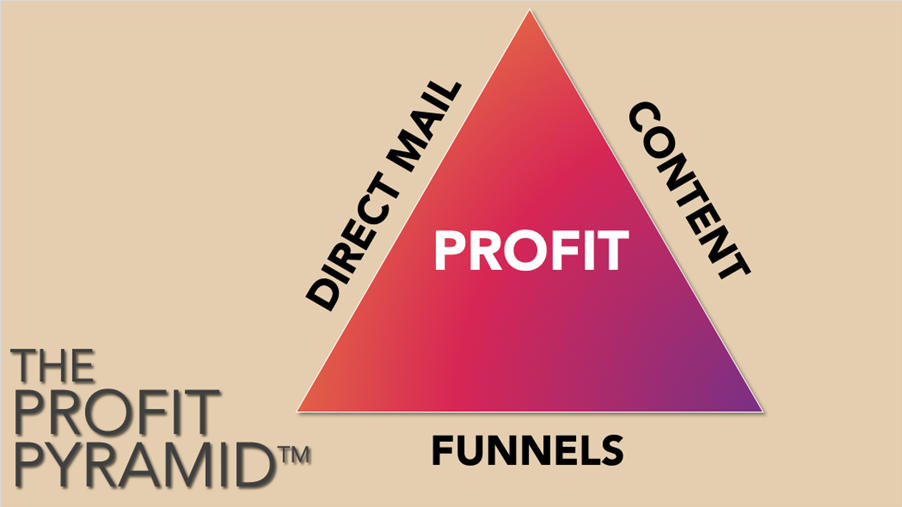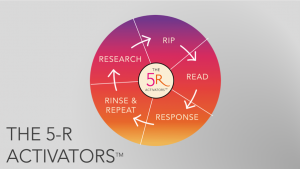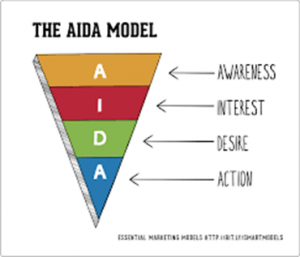When you launched your agency, where did you think your revenue would be in year 5?
Maybe you’re a new start, and you haven’t reached year 5 yet – what’s your prediction for your turnover in your fifth year?
Back in 2017 when we launched our brand-new agency in the Lake District, AshdownJones, we dutifully wrote our 5-year business plan.
Trying to predict what revenue we’d do in year 5 was a bit of a finger-in-the-air task, but we plumped for £500k. We had zero idea whether we could ever do it, or if it was just a pipe dream.
Having coached many agents over fifteen years I knew that the average sales revenue by year 5 was more like £300,000, not half a million pounds.
Could we buck the trend? Could we beat more seasoned and experienced agents?
We hit £300k and passed it in year 2. And both Phil and I gave a big sigh of relief – it was working.
In year 5, we didn’t just do £300,000. We did almost £1 million. £953k, to be exact, in sales-only revenue (we don’t do lettings) from just one little non-high street office. We were so close to the one-million-pound mark, but missed it by a couple of weeks, reaching that huge milestone in the middle of January this year.
Building AshdownJones, we had a huge advantage
We were marketers first, and estate agents second.
Because here’s what you need to know – a mediocre estate agent who is great at marketing will always win against a great estate agent who is mediocre at marketing.

If you’re a great agent but a self-confessed mediocre marketer, I have great news for you.
You don’t need to reinvent the wheel. You don’t need to take an expensive, time-consuming marketing course, read hundreds of marketing books, or hire an expert marketer.
You just need to follow our AJ Marketing Plan
Warning: it’s a simple-to-understand plan, but not necessarily an easy-to-implement plan. If you’re feeling a little overwhelmed, or you’d like some help to get your marketing working for you, I’d be happy to jump on a 20-minute call when you can ask me your burning questions for free. Just pop me an email at sam@fire-wave.co.uk or add me on Facebook and send me a message.
Introducing The Profit PyramidTM

These are the only three marketing elements – the 3 Cornerstones – we use In AshdownJones to get through the right doors – those ones we really want. As we find exactly what marketing works for us, and teach it to our clients, who then feed back their results to us. This means that all our ideas have been tested again and again, to make sure that we only teach techniques and tactics that actually work, so you can be confident of implementing them into your agency and getting the same great results we and our clients get.
CORNERSTONE 1: DIRECT MAIL
Firstly, let’s clarify what we mean by ‘direct mail’. The easiest differentiator is that it’s mail addressed to a person, address, or both. Unlike leaflets, which are usually sent indiscriminately, door-to-door.
So think of Direct Mail as being a letter, in an addressed envelope, and perhaps with the addressees’ name.
Of course leaflets are so much easier – but are they effective?
Industry response rates for leafletting are dismal: you’re lucky if you get one good enquiry per 10,000 leaflets. That’s a response rate of 0.01%. I know a quality, independent agent in Leicestershire who sends out 30,000 leaflets per month in the hope of getting just one market appraisal. With an average fee in her area of around £7k, she can justify it, but I still have a problem with this approach:
What about the other 99.99% of people who didn’t call you?
If you keep sending out thousands of leaflets on a regular basis, you’re simply teaching your audience to ignore your marketing. And that’s a dangerous precedent to set.
Mass canvassing damages trust.
Not to mention the environment, and your bottom line too. Better by far to be selective in your mailings, targeting small groups of homeowners, with a carefully crafted series of letters. A stamped, handwritten envelope is certain to be opened, and anyone who does take the time to read two or even three pages of a well-written letter, is far more likely to take an action at the end of it. After all, they will have invested several minutes absorbing and engaging with your content, as opposed to a few seconds it would take them to digest the text on a leaflet.
What are you going to say in your direct mail?
The medium of a leaflet tends to lend itself to something urgent, like an offer. I’ve seen dayglo leaflets offering free conveyancing, ‘sell for £999’, half price fees, and worse. With its attention-grabbing font and ‘what should we put on the back?’ approach to design, a leaflet is never going to attract anyone other than a bargain hunter. If that’s the type of client you want, a leaflet campaign should work well for you.
If however you’re looking for quality vendors, like the independent agents I work with are, then it’s time to change your approach: from leaflet to letter; short text to long copy; mass mailing to targeted campaigns. You need to invest some time and effort into creating the right letter. Thinking carefully about your core message, and spending time writing with your ideal client in mind, means you’ll create a letter that could still be winning you quality instructions years from now.
The proof is in the pudding
In our first year of opening AshdownJones, Direct Mail was directly responsible for £351,964 in fees for us. In fact, we worked out that every single letter we sent generated £977 in fees. Not a bad rate of return, wouldn’t you say?
And only last month, we sent out just 55 letters to targeted homeowners, and got back 7 responses; 6 phone calls, and 1 email. So far, 5 valuations booked. And as we’re pretty much converting at 90%, even at 1.5% (highest in our area by far), we know we’ve probably generated at least £40k – £50k – from just 55 letters.
Nothing consistently drives money and business more than direct mail
The 5R ActivatorsTM

Since 2004, we’ve sent out almost a million letters. Our experience has shown us exactly what does – and doesn’t – work, in the world of direct mail. And we’ve condensed all of the metrics, results, tactics, techniques and tricks into just five success factors:
1. Research – to be sure you’re sending your letters to the vendors you want, and who will actually welcome your approach, you need to do your research. We target properties on the marketing in the top three council tax bands. Whatever your target market is, you need to make sure you do your research thoroughly.
2. Rip – getting your direct mail opened is crucial. After all, if the recipient doesn’t even open your mail, there’s no chance they’ll respond, and your wonderful letter will be wasted.
a. Use a standard sized envelope; we find DL is best.
b. Mix your envelopes up – use colours sporadically to make sure your letters aren’t identified by their colour.
c. Don’t use your brand colour, or you’ll raise their sales barriers before they’ve even opened your letter.
d. Hand-write the address, so it looks like a personal letter.
e. Use a stamp, not a frank. Bills are franked; personal letters are always stamped. And use 2nd class; our research shows no uplift in response from 1st class stamps, so save your pennies.
3. Read – to get your recipient to read your letter, make it long. Long copy always performs better than short copy. Long letters look more important, and you can make it more educative, and therefore more helpful. Break up the text with short sentences, punchy paragraphs and images.
4. Response – it’s not enough to get your letters delivered, opened and read. The point of your letter is to elicit a response. The best and most successful strategy to get a response is to make your call to action (CTA) easy and compelling. If you ask them to call you, you’ll get less responses than if you invite them, for example, to download a checklist or a free guide.
5. Rinse and Repeat – the only way to determine which direct mail tactics work, and which really don’t, you need to keep accurate records. Monitor elements like the colour of envelopes used, the day of the week you send them, and the images you use in your letters. Do more of what works, none of what doesn’t, and make sure you get your direct mail send-outs on a schedule. If your direct mail campaigns rely on you, they may never happen. Assemble a ‘mailing box’, full of envelopes, printed letters, stamps and a list of addresses, so that you can delegate the mail-outs and ensure they get done regularly, no matter what.
In a nutshell…
- We could not have built AshdownJones without Direct Mail
- One good letter can be worth hundreds of thousands of ££s.
- Your competitors are doing it wrong (or not at all)
- Take the time needed to write your letters
- Test, test and test some more
- Remember your reader may become your client
- Start the relationship as you mean to go on.
CORNERSTONE 2: CONTENT
Content can do so much for your business – it can act as rocket fuel, and propel you to another level of success. Here’s why:
1. Content creates brand awareness
With the right kind of content, you can get your brand in front of a new audience, in new places. There are plenty of channels to choose from – Facebook, LinkedIn, Twitter, Instagram – so you can choose the channels that are most in alignment with your brand. Seeing your content images in their newsfeed keeps you top of mind before people are even considering selling their house, so they think of you straight away when they do make the decision to move. Creating consistent content, just showing up, month after month, with helpful expert articles on the biggest problems and challenges your clients are facing, means that you’re building deep trust before you even have that first conversation.
2. Content boosts SEO
SEO means ‘Search Engine Optimisation’. In a nutshell, this just means making sure that Google ranks you for the key questions your audience is asking. If someone in your area types into Google “should I sell or extend?” would you want an article on this topic to appear on the first page of the Google search results? We certainly would. They are Googling their property selling questions anyway, so better it’s your article that shows up, rather than one of your competitors’.
3. Content builds your audience
At any one time, there are between 2% and 4% of properties in your area on the market. If your market is particularly slow at the moment, you may find that your percentage is 4% or more. If on the other hand, your market has a quick turnover – and this is typically true of urban areas – you could see 2% of properties or less being marketed at once.
Let’s take the middle lane, and assume that on average, 3% of properties are currently for sale. This means that if you live in an area with 50,000 households, around 1,500 properties will be on the market. This is your ‘on the market’ opportunity.
However, for every homeowner trying to sell, there are at least four more thinking about moving house. These are people who are currently discussing moving with their family and friends, browsing Rightmove or driving past for sale boards. These are people who are not yet on your radar, but they could be – if you create the right kind of content that will attract engage them. This brings your opportunity to around 15% of homeowners in your area, which, using the typical area size of 50,000 chimney pots, means that your opportunity is a sizeable 7,500 properties. These homeowners are very likely to be searching online for their most pressing questions about moving, and you can be present in their search results, if you create content that perfectly aligns with their home moving journey.
In summary, if you’re looking to connect with as many homeowners in your area as possible, all you need to do is build a bigger audience. It’s that simple.
4. Content builds trust
Building trust is hugely important in our industry, but often a process that is neglected. Estate agency is an industry built on trust. After all, we are selling the invisible – a future move. With a less-than-desirable reputation, independent estate agents have a real opportunity now to change the perception people have of our industry, to be more transparent and authentic. The higher degree of trust you can create with your audience, at, the more likeable you will be perceived as, and ultimately, the right choice of agent to help them with their moving plans.
Content builds trust by allowing you to be transparent, and so increase the familiarity they feel with you. When someone feels they know you, your first handshake with them on the doorstep is not between two strangers, but instead carries the warm feeling of recognition. Which brings us onto number 5….
5. Content increases conversion
When you talk to someone who feels they know you, about how you will help them sell and move home, they are much more likely to believe you. And because so much of conversion success is built on belief, your conversion rate will go up. A lot. Going into a valuation visit completely cold, you’re statistically likely to only convert at 33%. If you’re good, that might be 50%. But when the vendor has read all your blogs, watched all your videos, and ‘gets’ you, you’re almost certain to be their agent of choice. That’s how we convert at 90% and higher, and you can too, with the right content.
6. Content positions you as a thought leader
I’m guessing that you’re reading this because you are an independent agent who wants your brand to be seen as progressive and innovative. You want to make sure you’re always moving ahead of the curve, not waiting for everybody else to make their move, then trying to catch up with them. In your content you can be not just educative and helpful, but also opinionated and outspoken, so long as you are respectful and your thoughts are well expressed. By doing so, you can position yourself as a thought leader in your area.
People are drawn to thought leaders; it’s a natural human trait. We’re drawn to people who we feel are influencers, who have the latest ideas, and who want to share their ideas in a non-dictatorial way that can also be engaging and entertaining. And that’s exactly what you can do with your content.
Content is the new advertising – Seth Godin
I’m not going to lie and tell you creating content is easy
Having written and published over a thousand words (plus a book), I can tell you with some authority that it takes hard work and practice to create content that actually works. In other words, to create content that attracts the right type of audience, that generates a click, and then converts those clicks to quality instructions. You won’t do it overnight. But with help from me, and buckets of hard work and perseverance, you will get there.
I’ve lost count of the number of agents I knew who went broke because they did not have a replicable and cost-effective marketing system. Or those agency owners who are spending (wasting) thousands of pounds a year on generating rubbish leads, because they are using a broken content strategy.
Content marketing is simpler than you think (but probably much harder)
Here’s the simple bit: all you need to do is…
- Answer their Googled questions
- So you become top of mind BEFORE they sell
- And then be their choice of agent WHEN they sell.
This is exactly what we’ve done, in AshdownJones. We now have a super-engaged, hot audience of over 6,000 local relevant people, all because of the quality and consistency of our content. Using my 3% and 12% figures from earlier, that means we’re talking to at least 180 people currently on the market, and another 720 thinking of moving house = a total opportunity of 900 people.
CORNERSTONE 3: MARKETING FUNNELS
This final piece in your marketing jigsaw is ‘Funnels’ – specifically, Digital Marketing Funnels.
A digital marketing funnel is simply the journey a prospect takes from being unaware of your brand to becoming a customer. By creating an effective funnel, you can guide your customer’s journey, and encourage a response.
Here’s why you need a digital marketing funnel:
 You can automate your lead generation and so save time and money
You can automate your lead generation and so save time and money
 You can reach an audience of people who have never heard of you
You can reach an audience of people who have never heard of you
 You attract through your content – no hard sell
You attract through your content – no hard sell
 You can reach people much earlier in their home selling journey
You can reach people much earlier in their home selling journey
 You can set it and forget it – and watch the leads come in for years to come.
You can set it and forget it – and watch the leads come in for years to come.
Are you struggling to get your marketing funnels working for you?
Or perhaps you’ve no idea what a marketing funnel does, but you know you probably need one?
In either case, you’re in the right place.
First things first…
What is a marketing funnel?
A marketing funnel is a tool that shows how someone responds to your marketing, taking the journey from being a stranger to a client.
Of course, not everyone will make the complete journey; some people may read a blog post you’ve written then disappear forever. Others may love your post so much they seek out more, before then going on to check out and like your Facebook page, watch your videos and download your free guide. Once they are smitten, it’s a small step for them to pick up the phone to you and arrange a valuation of their home. And given how ‘warm’ they are now, having consumed all your content before booking the valuation with you, they are much more likely to instruct you, and not one of your competitors.
The old-style marketing funnel
In the olden days (like, five years ago) marketing funnels looked like this:

Literally, you would pour prospective clients – vendors and landlords – in the top, and sales revenue would magically tumble out the bottom and into your bank account. All you had to do was make sure enough people entered your marketing funnel to account for the ones that wouldn’t make it through to the bottom.
The marketing funnel reinvented
It’s much more useful – and accurate – to think of a marketing funnel as a journey, like this:

So a stranger to you comes across your content, your Facebook page, or a letter from you – KNOW.
They take an action – maybe liking a Facebook post, or downloading a checklist – LIKE
You have a conversation with them by email or phone – TRUST
They book a valuation – TRY
They instruct you – BUY.
They have taken a journey with you, nurtured at each step.
Our marketing funnels work so well for us, we now have several, for different types of sellers. Almost everyone we go to see has had several touchpoints with our marketing funnels. They are an integral part of our marketing, and a big part of our success in generating £500k in instructed fees in our first 12 months.
So if marketing funnels are so effective, why are so many independent estate agents still using outdated marketing methods?
Here’s what doesn’t work:
Spending a ton on Google Adwords
One independent agent in Wimbledon I spoke to recently, spends £800 a month on Google Adwords. This brings her in, on average, two enquiries a month, so £400 each. But these are not quality market appraisals. Anyone who has to type into Google, estate agents in Wimbledon, is probably not the best quality vendor for you. Of course, they could be out of area, but more likely, they are at best, looking for a third agent valuation to make up the numbers, and at worst, simply looking for a transaction at the lowest cost.
Instead try: Google Display Network
Keeping your Rightmove rep happy with expensive extra features
Unless you’re a shareholder, don’t bother. There are plenty of better places to spend those extra few hundred pounds a month, for a far better return on your investment.
Instead try: nothing – just ditch it
Advertising every week in the paper
(Do people still do this??) Advertising your properties every week in the local newspaper to prove to vendors that you have plenty of quality stock so that they too will want to list their house with you, even though buyers do not read the paper and book viewings through it, is a very odd way of attracting new vendors.
Why not just market to vendors direct?
Instead try: PR
A beautiful and pricey website
One of my clients, Alison, from Bedford, commissioned a website from a local web company for £4,000. Within six months, she’d scrapped it, and built her own, for free, on WordPress. It looks better, and does exactly what it needs to do – capture leads from interested vendors and landlords.
Instead try: LeadPages for landing pages
Complicated customer relationship management software
Another of my clients – Peter from Aberdeen – was using the leading industry CRM software, spending £600 a month on it, as he had a large database. Within a month of working with me, he had cancelled the contract, and switched his email marketing to my recommended supplier, at £12 a month. It’s simpler, easier to use, and has features he needs, that the expensive version did not.
Sending out thousands of leaflets each month
Canvassing isn’t dead, but it does need the kiss of life. If you just keep sending out thousands of leaflets to every man, woman and child in your area on a regular basis, then of course you will get some valuations. Throw enough mud at a wall and it will stick. But whilst you’re getting 3 new enquiries from 10,000 leaflets, you’re teaching 9,997 NOT to respond to your marketing. Can you afford to burn out your audience in this way?
Instead try: small numbers of direct mail
Time for a change – or become irrelevant
It’s time to stop sending out leaflets that people don’t want, and paying for expensive print advertising that people don’t read.
A simple 8-step funnel to get you through more doors:
1. Set up a landing page with a service like LeadPages or ClickFunnels, to offer a gift like a checklist or digital guide. A landing page is a web page with no navigation, which maximises conversion.
2. Integrate your landing page with an email service provider like AWeber or Keap. This means that when someone inserts their email address to get access to the guide you’re offering, their details get automatically added to your list.
3. The guide is automatically sent to the subscriber, via their email address.
4. The landing page redirects to a thank you page.
5. The thank you page offers a valuation.
6. If you place your Facebook re-targeting pixel on the landing page, you can then create a Facebook ads audience to send both the subscribers, and the non-subscribers, (those who visited the page but didn’t enter their details) a relevant Facebook advert.
7. Set up an email nurture sequence so that your new subscriber receives a series of relevant emails from you.
8. Add a call to action (CTA) to each email to motivate a response.
Some ideas for a ‘subscriber briber’
Make sure the title of your guide is specific so that when someone subscribes to receive it, you learn something about them. Here are a few ideas:
 Moving with a Busy Family
Moving with a Busy Family
 Selling Your Bungalow
Selling Your Bungalow
 How to Sell Your Home for the Asking Price in Just 30 Days
How to Sell Your Home for the Asking Price in Just 30 Days
 Your Home Moving Checklist
Your Home Moving Checklist
 Planning to Sell? Your Complete Guide to Doing it Right
Planning to Sell? Your Complete Guide to Doing it Right

Creating a digital marketing funnel isn’t easy. I know, because I’ve created about a hundred of them, for us and for other independent estate agents who wanted to get their lead generation on autopilot.
Marketing can be a scary proposition for a non-marketer, as most estate agents are. All you want is a diary full of valuations on the best homes in your area, right? Marketing is the bridge between where you are now and where you want to be.
That’s why we’ve built a group of the best agents in the country, who are always sharing and supporting agents like you create the full diary we all want and need.
The AJ Mastermind gives you access to the very best estate agent marketing, training and peer group in the country.
Click the big gold button below to take a look for yourself, and let’s see if we’re a good fit for one another.
Sam and Phil
PS prefer to chat to a friendly human? Give us a call on 015394 40892 or drop me an email at sam@fire-wave.co.uk

Sam and Phil at our AJ Mastermind Summer Retreat – see more here
What to read next: Direct Mail – all you need to know



